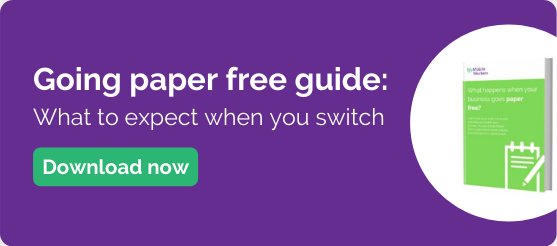It’s estimated that stress and related mental health issues within the workplace are costing UK employers between £33 billion and £42 billion each year.

This was the finding of the ‘Thriving at Work’ report, commissioned by the UK Government in 2017. It takes into account loss of productivity, sickness absence and staff turnover.
Managing stress and monitoring mental health is a particular issue with mobile workforces where employees are operating remotely and having to meet tight daily deadlines.
Here’s a look at the issue:
What is work-related stress?
The formal definition that’s used by the Health and Safety Executive (HSE) is that it’s:
"The adverse reaction people have to excessive pressures or other types of demand placed on them at work."
Being under a certain amount of pressure is an inevitable part of working life. And handled properly, pressure can be a positive force which helps to motivate workers and improve performance.
It starts to become a problem when pressure is causing excessive and prolonged periods of stress. This happens when the demands of work become greater than a person’s perceived ability to meet them.
If it’s not managed, it can lead to a range of mental and physical issues. The most obvious signs are increased absence, sickness and a lowering of performance.
It’s important to understand that stress can hit anyone - irrespective of age, experience or position within a company. Managers of mobile teams are just as susceptible as their workers.
What’s the link between stress and mental health?
Mental health and occupational stress are different but are often related. The HSE defines mental health as, “how we think, feel and behave.”
Prolonged periods of stress can start to cause or aggravate existing mental health problems. The most common issues are anxiety and depression.
This can create a cycle in which stress feeds causes mental health issue which, in turn, increases stress. The typical symptoms of both issues are similar - irritability, tiredness and general anxiety.
Why manage work-related stress?
Monitoring and managing the amount of stress workers are exposed to is a legislative requirement that’s covered by an employer’s duty of care responsibilities.
Reasonable steps need to be in place to control stress levels within a mobile workforce. Without these, companies leave themselves liable for a range of work-related health and safety issues.
But irrespective of legal issues, management of stress is an essential part of effective fieldwork. It helps to improve performance while reducing operational losses through sickness and staff turnover.
How do you manage work-related stress?
The 2017 ‘Thriving at Work’ report recommends that all employers, regardless of workplace type, industry or size, has in place a mental health at work plan.
You can find the full recommendations here.
An effective approach needs to reduce the risks of stress levels becoming excessive while having processes in place to detect and tackle it when the issue occurs.
Managing Stress
- Think about the recruitment process
- Risk assessments
- A healthy workplace
- Realistic scheduling
Recruitment process
Mobile working is always going to involve a certain amount of pressure. While some people can thrive in a fast-paced and competitive environment, for others it’s overwhelming and anxiety-inducing.
An effective recruitment process should ensure that the nature of the work is properly communicated. Stress management should be an important part of the assessment.
Risk assessment
The HSE recommends that employers carry out a risk assessment for work-related stress. The aim of this is to provide an overview of risk factors across an organisation and then to create an action plan.
You can find a full HSE guide on how to approach this task here.
Healthy workplace
One of the challenges with stress-related issues is that workers are so reluctant to discuss them. It’s often perceived to be a sign of weakness with fears of it harming their employment status.
These conversations need to be actively encouraged with workers able to speak openly about how they are feeling. This comes down to good management and effective support structures.
Realistic scheduling
The main cause of stress within a mobile workforce is likely to be the daily schedule. It’s when meeting deadlines and getting jobs done becomes so demanding that they feel like they are fighting a constantly losing battle.
Schedules need to be realistic and based on real-world practicalities. They should take into account all of the complexities and pressures of mobile work - parking, finding premises, dealing with customers/clients.
The 3 ways of monitoring stress
- Active monitoring
- Getting feedback
- Reviewing data
Active monitoring
Managers and supervisors need to be actively looking for signs of stress within a workforce. This may be seen in the general attitude and behaviour of an employee or with increased levels of sickness and absence.
When potential issues are found, it needs to be dealt with sensitively. People should feel they are being helped and supported - not targeted for failing to cope.
Getting feedback
Allow your workers to express how they are feeling. This could be informal chats or possible a survey that allows anonymous feedback.
Many times, the smallest of operational changes can make a major difference in reducing stress. Processes should be simple and smooth with any everyday niggles or frustrations being tackled.
Reviewing data
A major advantage of mobile workforce management systems is access to accurate performance data. A system such as MyMobileWorkers includes integrated reporting tools that allow every aspect of operations to be monitored.
This provides an effective tool for identifying potential stress-related issues with lowering of performance and increased sickness and absence. It can also be used to make sure that schedules are realistic and based on real-world data.
Want to know if you're doing enough to keep your workers safe? Find out in our essential guide to road worker safety.
Image by Natasha Spenser from Pixabay | Image credit


